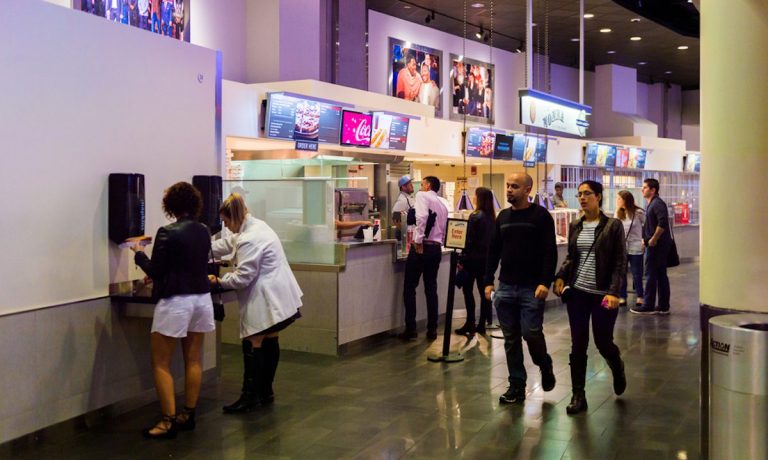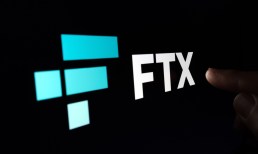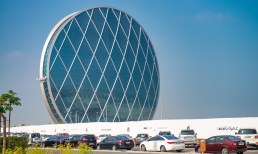Over the past 20 months, consumers have increasingly come to expect on-demand gratification and digital convenience when ordering food at home, and these expectations are beginning to change the way they interact with all foodservice businesses. The on-demand economy is changing how students dine on college campuses, how travelers purchase foods at airports, and now how live event attendees interact with concessions at venues.
You may also like: Old-School Campus Cafeterias Get Connected Economy Upgrade
And: The On-Demand Economy Comes for Airport Dining
“Pre-pandemic, the majority of your transactions [at live event venues] were either cash at a cash register or a credit card swipe through a point of sale [POS] system. It was still pretty much dominated by walk-up orders,” Carson Goodale, chief strategy officer and co-founder at FanFood, a mobile ordering platform for live event and hospitality venues, told PYMNTS in an interview. “What we’ve seen, especially for foodservice businesses and their operators trying to be more operationally efficient and overcome this staffing shortage, which has been their biggest challenge, is a shift from those traditional order-taking methods to decreasing the need for point-of-sale systems altogether.”
Certainly, digital technologies have become the norm in food ordering and payments. According to data from PYMNTS’ 2021 Restaurant Readiness Index, created in collaboration with Paytronix, 64% of all quick-service restaurant (QSR) orders now come from digital channels (pickup, third-party aggregators, mobile order-ahead and online delivery). Additionally, 55% of restaurants’ managers and customers believe that offering the ability to pay online will be important to restaurants’ future success, 53% say the same of the ability to order online and 46% say the same of the ability to pick up orders without standing in line.
Read more: QSRs’ Lagging Loyalty-Reward Investment Hurts Innovation and Sales
Advertisement: Scroll to Continue
For its part, FanFood provides event venues with tools both for pickup orders at concession stands and for delivery orders to be brought to consumers’ seats.
Left to Their Own Devices
Noting this move away from POS systems, Goodale predicts that the mix at venues will shift toward both kiosk ordering and transactions placed through consumers’ own mobile devices. Within the next few years, he believes the mix will shift from almost entirely POS and cash register transactions to just 30-40%, with kiosks accounting for about 10% of sales, mobile ordering making up about 40% and non-traditional checkout options such as Amazon’s Just Walk Out accounting for the rest.
“With mobile ordering, you can now accept other forms of payment as opposed to just cash and credit card,” he said. “You have Apple Pay and Google Wallet, and you can introduce things like group ordering … gift cards and stored value, and taking purchases through crypto, so there are more ways you can process payment by going mobile.”
Findings from the Index show that restaurant managers actually overvalue digital payments’ relevance to consumers, with 34% of the former believing that the ability to pay with digital wallets will be important to restaurants’ future success, compared to just 21% of consumers. Still, that figure means that more than one in five restaurant customers view this as an essential feature, which represents a sizable market opportunity.
The Contagion Factor
The pandemic went a long way toward growing the demand for digital options in live event spaces, with habits that started as an antiviral measure proving to be sticky. Goodale highlighted the results of a FanFood survey indicating that 70% of users felt that the availability of cashless or contactless options at venues was “very important or extremely important” to them, and 30% said they do not carry cash anymore.
In fact, the company received a boost in California, when local legislation accelerated the trend already precipitated by consumers’ own contagion concerns. Goodale’s co-founder, FanFood’s VP of Customer Success Dustin Hemesath, told PYMNTS that at a Speedway that seated 5,000, the state of California mandated in June and July that consumers could not walk up and order, requiring them to purchase their food in advance for pickup or for delivery to their seats.
“So that was 100% all through FanFood,” Hemesath said. “Then in August, it switched, and they were allowed to open up to walk-up customers. At that time, FanFood mobile orders were still about 30% of overall sales.”
The Connected Stadium
Concessions vendors are also asking for digital solutions that can serve as a one-stop shop to meet all of their technological needs.
Read more: With ‘Guest Manager,’ Yelp Joins Tech Providers Aiming to Be Restaurants’ One-Stop-Shop
However, unlike other restaurants, concessions vendors have the opportunity to take advantage of the connected ecosystem of the venue to create an end-to-end digital experience that encompasses not only consumers’ food routines, but also other aspects of their live event experience, including ticketing and other commerce transactions.
PYMNTS research indicates that brands and retailers that can meet consumers’ needs across as many pillars of the ConnectedEconomy™ as possible — how they eat, shop, pay, live, travel, bank, work, communicate, have fun and stay well —have the advantage over those that stay limited to just one. At stadiums, tech providers have the opportunity to engage with consumers in regard to how they eat, how they shop, how they pay and how they have fun, creating a deeper digital relationship.
See also: How Consumers Live in the Connected Economy
“It feels that where we’re heading is not just providing a [food and beverage] mobile ordering service, but [figuring out] how do to be that one-stop-shop vendor to service all of their needs,” Goodale said. “In a year from now, I’m hoping that we’ll be starting to plug in our different strategic partners to help our venue operators own the entire digital journey, starting to integrate parking and tickets in this very easy-to-use, white-labeled experience that helps these venue owners and operators have complete control.”




